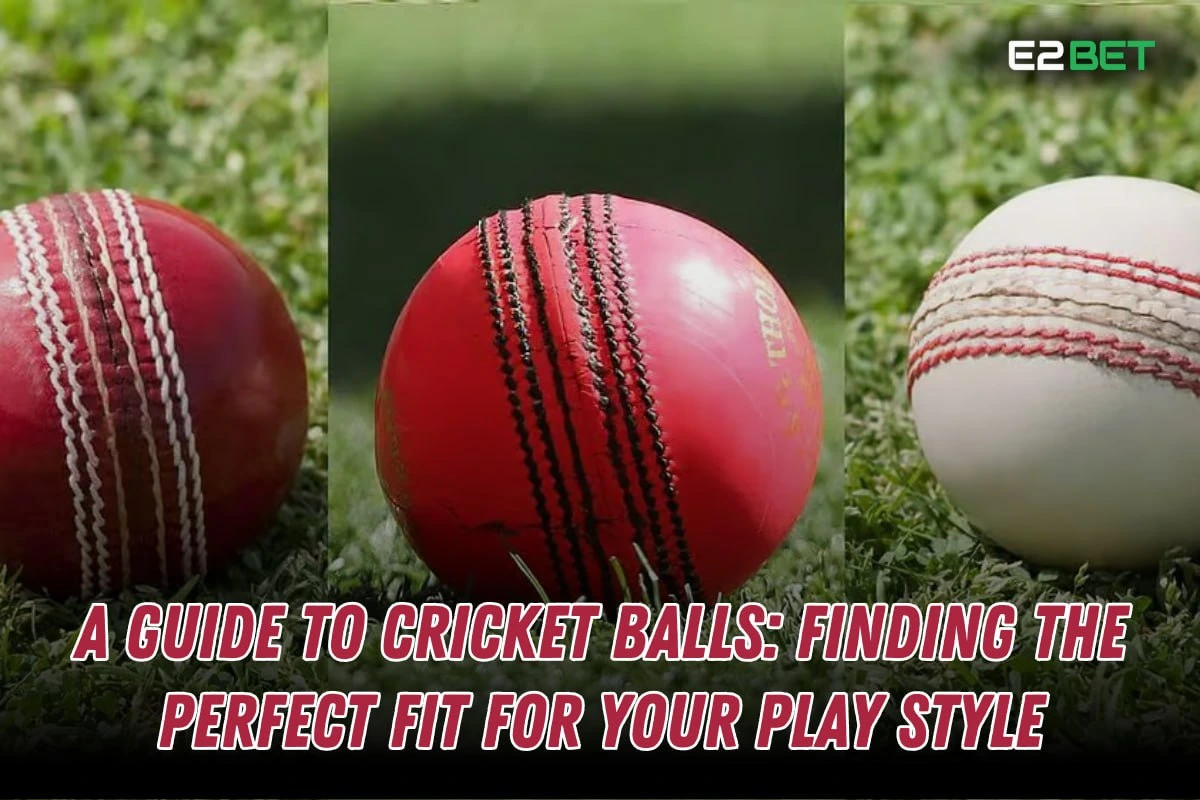Cricket is a game of precision, skill, and strategy, and the cricket ball is at the heart of it all. Whether you’re an amateur cricketer, a budding professional, or simply exploring the sport, finding the right cricket ball is crucial. This guide dives into everything you need to know about cricket balls, their types, and how to choose the one that fits your play style perfectly.

What Are Cricket Balls Made Of?
Cricket balls are typically made of a cork core, tightly wound with string, and encased in a leather shell. The leather is dyed (usually red, white, or pink) and stitched with a prominent seam. This construction gives the ball its durability, bounce, and aerodynamic properties.
Types of Cricket Balls
Different formats and conditions require different types of cricket balls. Here’s a breakdown:
1. Red Cricket Balls
Used primarily in Test matches, red cricket balls are known for their durability and ability to swing under natural light. They are perfect for traditional formats and seasoned players.
2. White Cricket Balls
White cricket balls are used in limited-overs cricket like ODIs and T20s. Their visibility under floodlights makes them ideal for night games.
3. Pink Cricket Balls
Pink cricket balls have gained popularity in day-night Test matches. They retain visibility under artificial light and are designed to perform similarly to red balls.
Choosing the Right Cricket Ball
When selecting a cricket ball, consider factors like your skill level, game format, and playing conditions. For instance:
- Beginners may benefit from softer or training cricket balls.
- Professionals should opt for high-quality options like Kookaburra or Dukes.
Cricket Ball Standards and Regulations
The International Cricket Council (ICC) regulates the weight and size of cricket balls. A standard cricket ball weighs between 155.9g and 163g and has a circumference of 22.4 to 22.9cm.
How to Maintain Cricket Balls
Proper maintenance can extend the life of your cricket ball:
- Use cricket ball maintenance kits for cleaning and polishing.
- Avoid using cricket balls in wet conditions, as moisture can damage the leather.
Why Are Pink Cricket Balls Used?
Pink balls are a newer addition to the cricketing world. They are specifically designed for day-night Test matches, offering better visibility under lights. Their unique construction ensures durability and performance across varying conditions.
Best Cricket Ball Brands
Some of the top brands include:
- Kookaburra: Known for their premium quality and use in international matches.
- Dukes: Preferred in English conditions for their pronounced seam.
- SG: Widely used in the Indian subcontinent for their excellent swing and seam retention.
Cricket Balls for Different Play Styles
1. For Fast Bowlers
A ball with a pronounced seam, like Dukes, is ideal for maximizing swing and seam movement.
2. For Spinners
Balls with good grip and a well-maintained seam are crucial for turning the ball effectively.
3. For All-Rounders
Opt for a durable ball like SG that offers consistent performance for both batting and bowling.
Affordable Cricket Balls for Beginners
Beginners can start with practice or training balls. They are softer, more affordable, and designed to minimize injury while developing skills.
Features of High-Quality Cricket Balls
Premium cricket balls are characterized by:
- Even stitching on the seam.
- Durable leather with consistent shine.
- Balanced weight distribution for precise handling.
How to Choose a Cricket Ball Based on Conditions
- Dry Conditions: Opt for balls with harder leather for better performance.
- Wet Conditions: Use waterproof balls to prevent damage.
FAQs
1. What are cricket balls made of?
Cricket balls are made of cork core, string, and leather.
2. Why are pink balls used in cricket?
Pink balls are used for better visibility during day-night matches.
3. Which brand makes the best cricket balls?
Kookaburra, Dukes, and SG are top choices for professional-grade cricket balls.
4. How to maintain cricket balls?
Regular polishing and avoiding moisture are key to maintaining cricket balls.
5. What is the ideal cricket ball for spinners?
Balls with a pronounced seam, like Dukes, are excellent for spinners.